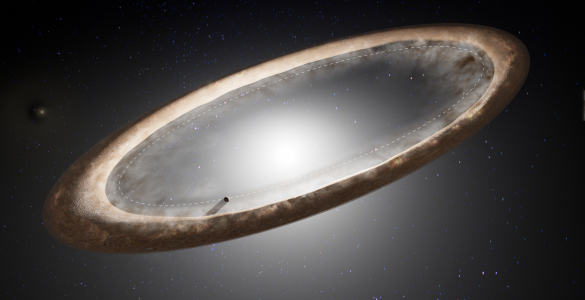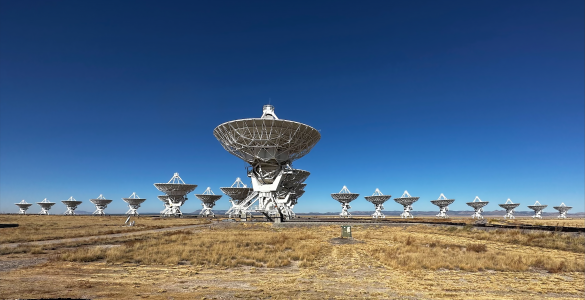A distinguished panel of scientists today announced their support for the continued funding of the Atacama Large Millimeter Array (ALMA) Project at a press conference given by the National Academy of Sciences. The ALMA Project is an international partnership between U.S. and European astronomy organizations to build a complete imaging telescope that will produce astronomical images at millimeter and submillimeter wavelengths. The U.S. partner is the National Science Foundation, through Associated Universities, Inc., (AUI), led by Dr. Riccardo Giacconi, and the National Radio Astronomy Observatory (NRAO).
“We are delighted at this show of continued support from our peers in the scientific community,” said Dr. Robert Brown, ALMA U.S. Project Director and Deputy Director of NRAO. “The endorsement adds momentum to the recent strides we’ve made toward the building of this important telescope.”
In 1998, the National Research Council, the working arm of the National Academy of Sciences, charged the Astronomy and Astrophysics Survey Committee to “survey the field of space- and ground-based astronomy and astrophysics” and to “recommend priorities for the most important new initiatives of the decade 2000-2010.”
In a report released today, the committee wrote that it “re-affirms the recommendations of the 1991 Astronomy and Astrophysics Survey Committee by endorsing the completion of . . . the Millimeter Array (MMA, now part of the Atacama Large Millimeter Array).” In the 1991 report “The Decade of Discovery,” a previous committee chose the Millimeter Array as one of the most important projects of the decade 1990-2000.
Early last year, the National Science Foundation signed a Memorandum of Understanding with a consortium of European organizations that effectively merged the MMA Project with the European Large Southern Array project. The combined project was christened the Atacama Large Millimeter Array.
ALMA, expected to consist of 64 antennas with 12-meter diameter dishes, will be built at a high-altitude, extremely dry mountain site in Chile’s Atacama desert. The array is scheduled to be completed sometime in this decade.
Millimeter-wave astronomy studies the universe in the spectral region where most of its energy lies, between the long-wavelength radio waves and the shorter-wavelength infrared waves. In this realm, ALMA will study the structure of the early universe and the evolution of galaxies; gather crucial data on the formation of stars, protoplanetary disks, and planets; and provide new insights on the familiar objects of our own solar system.
“Most of the photons in the Universe lie in the millimeter wavelength regime; among existing or planned instruments only ALMA can image the sources of these photons with the crispness required to understand the events of galaxy, star and planet formation which launched them into space,” said NRAO’s Dr. Alwyn Wootten, U.S. ALMA Project Scientist.
ALMA is an international partnership between the United States (National Science Foundation) and Europe. European participants include the European Southern Observatory, the Centre National de la Recherche Scientifique (France), the Max-Planck Gesellschaft (Germany), the Netherlands Foundation for Research in Astronomy, the United Kingdom Particle Physics and Astronomy Research Council, the Oficina de Ciencia Y Tecnologia/Instituto Geografico Nacional (Spain), and the Swedish Natural Science Research Council.
The National Radio Astronomy Observatory is a facility of the National Science Foundation, operated under cooperative agreement by Associated Universities, Inc.















